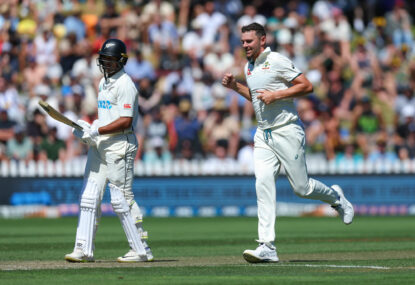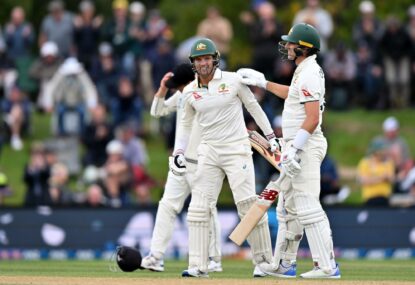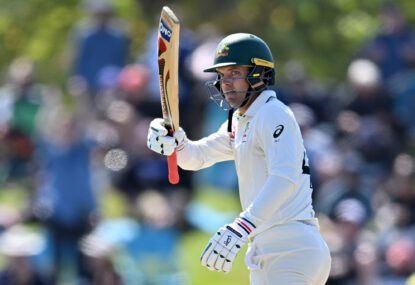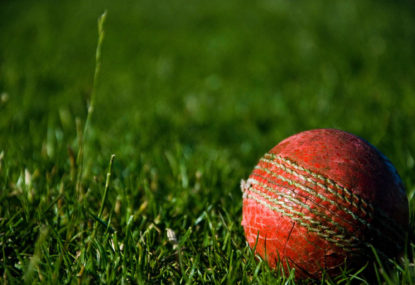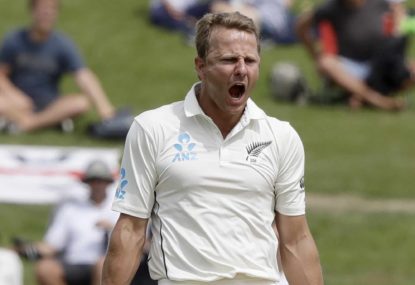‘The batsmen win you matches; the bowlers win you tournaments’ has become a common cliche in modern ODI arena.
Even those who have doubts about this statement will at least admit bowlers can take you to the World Cup finals on the evidence of the recent semi-finals.
About a year ago, I predicted the 2019 World Cup would be decided by the bowlers, but my prediction was that the spinners would play a major part. Sadly, the likes of Kuldeep Yadav, Adam Zampa, Rashid Khan and others have badly disappointed me.
While I have been proven wrong on that count, there is no doubt the two teams with the most balanced bowling attacks have made it to the final.
Before considering the relative strength in the bowling department, I would first like to take a look at the bowling attacks of some of the other major powers in the World Cup.
Australia’s Mitchell Starc is certain to finish the World Cup as the highest wicket-taker and, in my mind, he has been the best bowler in the World Cup despite his failures in the semi-final.
The problem for Australia was that there wasn’t enough support for him. Initially, Pat Cummins did an excellent job but, just as Jason Behrendorff arrived on the scene, he lost his rhythm.
The biggest problem for the Aussies, however, was the lack of a fourth wicket-taking option; both Adan Zampa and Nathan Lyon failed in this regard.
After Zampa’s failure initially, Lyon offered some hope. But while Lyon is Australia’s undisputed GOAT, his average of 46.00 per wicket in ODIs would suggest he is not a great wicket-taking option in that format.
Australia will need to find a wicket-taking spin option to build their team for the future.
A strong ODI bowling attack should preferably have four major wicket-taking options. India certainly planned along this line, but their two wrist spinners in Yuzvendra Chahal and Yadav disappointed. Perhaps the conditions didn’t help them.
Their ineffectiveness allowed the oppositions to play Jasprit Bumrah without taking any risk. The classic example was the semi-final, when the New Zealand middle order managed to go after Chahal despite being under pressure.

(Photo by Michael Steele/Getty Images)
The Pakistan case was something similar to that of Australia, while the frontline seamers Mohammed Amir and Shaheen Afridi were superb, the spinners failed to make much impact. Sri Lanka depended too heavily on Lasith Malinga, while Mustafizur Rahman appeared as a lone hand in the Tigers’ attack.
Finally, much has been made of the AB de Villiers story – I think they missed Dale Steyn almost as much as him.
In both of their opening matches, they were set targets well over 300 and fell short in both cases. With a more balanced attack, they would have won their match against New Zealand.
So, now we are about to compare the two bowling attacks in the final. The three important criteria for me are the number of wicket-taking options, the ability to pick up wickets in the middle overs, and the overall depth in the bowling attack.
We will find out that both teams are almost evenly matched in every department.
Main wicket-taking options
It’s three each for the sides when it comes to main strike bowlers. Trent Boult, Matt Henry and Lockie Ferguson in the New Zealand camp matched by Chris Woakes, Jofra Archer and Mark Wood.
Both teams have excellent new ball attacks and plenty of options while it comes to slog overs’ bowling.
As for the back-up option, England has the slight edge with Adil Rashid and Ben Stokes in their squad. While neither of them has taken a great number of wickets in this World Cup, Rashid did pick up three vital wickets in the semi.
He was again expensive, but it’s important to go for wicket-taking bowlers and the England selectors have done well to go for him over Moeen Ali, who seemed the safer option in the eyes of many.
Stokes’ is presence is important in the bowling department as he offers a nice option as a Power Play three bowler if necessary.
Liam Plunkett doesn’t seem to pick up that many wickets, but just his presence is important for the home team.
The Black Caps’ backup bowling consists of Mitchell Santer, Jimmy Neesham and Colin de Grandhomme.
Now, excluding Neesham’s five-for against lowly Afghanistan they haven’t shown a great deal of wicket-taking potential – but we will see in the next section that they play a big part in the Kiwi success by being economical in the middle overs.
The middle overs
Somewhat unexpectedly, (at least for me) we have seen very few aggressive starts from opening batsmen this World Cup. For the most part, we have seen the top order batsmen negotiate the new ball carefully, then accelerate once they get their eyes in.
All these things mean that the middle overs have become vital in the modern game. Initially, I expected the spinners to be a great factor in these overs, but mainly we have seen bowlers like Archer, Starc, Boult, Amir and others come back for a second spell in the middle overs and do brilliantly.
Mark Wood has been good for England, while Lockie Ferguson impressed early on in the World Cup as the first change bowler.
But it is the role of the three back up bowlers in the New Zealand camp that deserves to be observed more carefully.
As I mentioned earlier, they haven’t taken that many wickets, but they have been difficult to score off.
What they mostly do is bowl very straight and take the pace off the delivery. The batsman really has to improvise to play a forceful square of the wicket shot.
The fields are set accordingly. This tactic worked in at least three matches against Bangladesh, South Africa and England. I would say that it even worked against MS Dhoni.
However, I do expect England to have a plan on how to handle these bowlers in the final.
Depth in bowling
Both teams have off-spinners as an emergency requirement; Kane Williamson for New Zealand, and Joe Root for England.
Both coaches, however, would prefer that they are not required to bowl – unless the Lord’s wicket produces plenty of turn. Both players, especially Kane, have a great responsibility as the No.3 batsman.
So, with the teams being evenly matched in the bowling department, I expect the in-form English batting to make the difference.
But then again, I expected the Indian top order to dominate the Kiwi bowling as well…






























































































